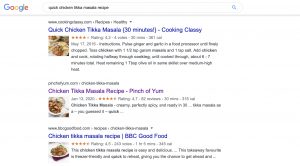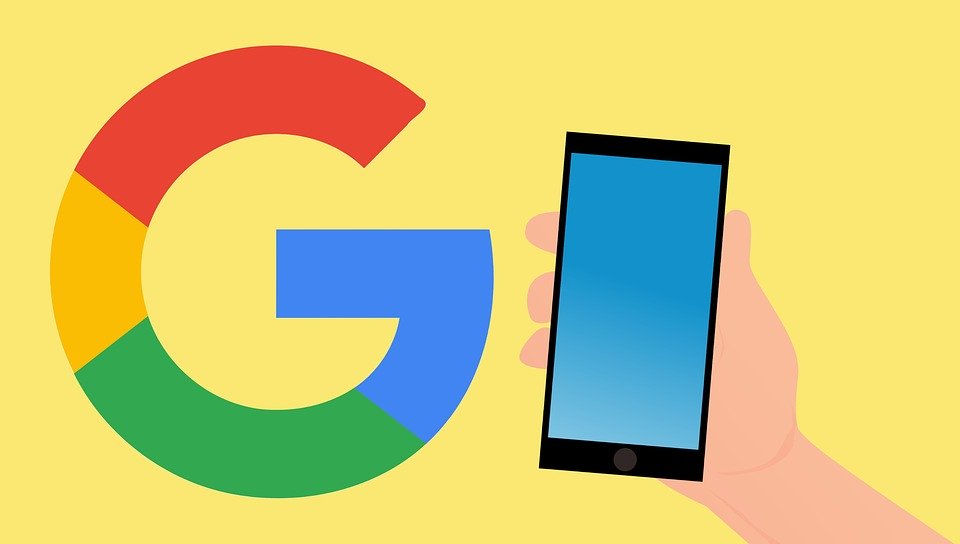Searcher intent is a pretty simple concept for anyone trying to understand why certain links end up above others on Google. While Google takes into account a lot of things like keywords and links to or from a page, one of the most crucial things their algorithm takes into account is how many people find a link useful. This aids in finding accurate results for more specific search terms by taking into account how many people clicked on that link looking for something similar. As this factor often takes precedence over backlinks and traditional keyword-based factors, it is helpful to know just what you’re dealing with.
So let’s get started:
Searcher Intent 101
As an example, let’s look at some similar search results with a crucial difference. In the image below, all 3 search terms serve almost identical purposes, however, the third one is lowest for a reason:

When users are looking for a quick recipe, they are most likely to emphasize on the preparation time for the food. On this front, the two above fulfil the criteria far better. Google notices this and adjusts the search result positions accordingly, noticing that those pages match the search query for more users. This is the basic version of how searcher intent works on their engine. This system not only helps users find appropriate links quicker, it also boosts the overall relevance of searches one can find on the first page.
There are 3 main categories of user intent that Google identifies:
- Informational: Search queries that tie into information. e.g. “how many letters in the alphabet”, “best news podcasts”, “best SEO practices” etc.
- Navigational: Links to a specific webpage or domain. e.g. “Facebook login”, “Twitter”, etc.
- Commercial/Transactional: Search queries that take you to businesses or sales points. These are often used by people who are ready to buy something or looking for a shop, e.g. “Rolling Stones Concert Tickets”, “Waterstones Book Store”, “Car Insurance Quotes”.
Optimizing For Searcher Intent

Optimizing searches can be a very specific art. Aside from the usual keyword and backlink optimization, keeping the data relevant is the main task. There are some other small things you can do to improve your rankings.
Limiting Popups helps because neither Google nor users like them.
14px+ Font helps by making things easier to read, which attracts more viewers.
Use Subheadings because Google searchers want answers quickly. Many readers will simply skim based on the headings.
Some more in-depth advice is specific to the types of queries.
Informational
For informational searches, nothing beats high-quality content. Most informational searches often get redirected to Wikipedia, so users will tend to trust it with information so you may not be number 1 for those searches. However, there are a wealth of informational queries that Wikipedia or other such sites can’t address, which is where it becomes a free-for-all. There are a bunch of ways to make informational search queries drive up your own website’s traffic:
- Blog posts full of tips can be very useful for your prospective viewers. Informational posts can also aid traffic to your business and attract clientele if used correctly. PR consulting firms, for example, could have blog posts on how to create press releases.
- How-to videos and step-by-step guides that are relevant to your business can bring in a lot of people who are looking for advice on an issue. Visual information is also much more attractive than walls of text, so this might be a better alternative in many cases.
- Design an infographic that illustrates a concept.
Navigational
There is very little that can be done about navigational search queries that you don’t own the site for. It’s a reminder that you should buy your domain name and try to have similar ones if you’re a big business. In many cases, it is worth buying keywords even if you rank organically for them, as it can drive up traffic.
True navigational search queries will take the user directly to the page they are looking for. However, some searches can appear to be navigational while being something else. Sometimes if someone googles Twitter, they might not be looking for the site itself but rather news or second-hand information about the site.
Transactional
Organic content and pay-per-click advertising are both recommended here. While transactional searches with the intent to buy often have a high conversion rate through organic searches, there are still perfectly valid reasons to run PPC ads. Ads take up a lot of space so they have high visibility on the SERP. Another reason is that a lot of people tend to actively look for ads with these sorts of queries.
Related article: How Schema Can Boost Your SEO & Visibility



3 Replies to “Searcher Intent & Better SEO Ranking Optimisation”
What is Keyword Cannibalisation & When is it an Issue? - Promoguy
April 24, 2020
[…] Article: Searcher Intent & Better SEO Optimisation Share22 / […]
SEO Image Strategy: Why Your Business Needs It - Promoguy
October 26, 2020
[…] uses a blend of text and images to get its message across. While there is a lot of focus on the textual SEO aspect, people often overlook image SEO. Image search is a big draw for potential eyeballs on your page. […]
SEO Service: E-Commerce Electronics Re-Seller - Promoguy
November 25, 2020
[…] personnel, they were not applying SEO in an optimal fashion. The main concerns were the amount of unique content and tweaking the product pages. A common problem that many companies like this run into are that they are selling the same […]
Comments are closed.